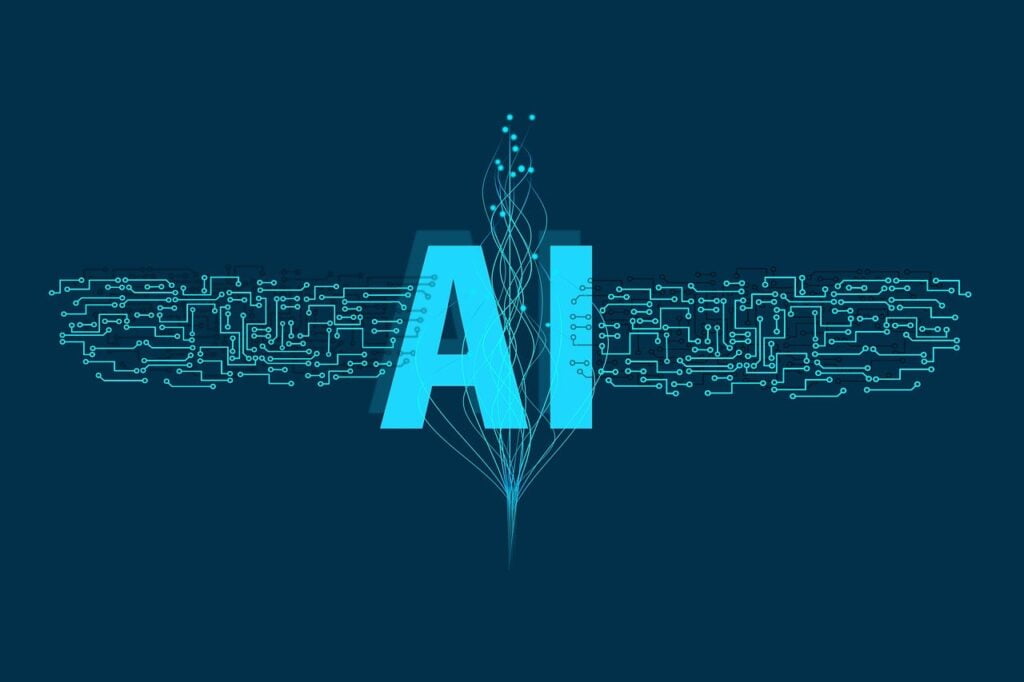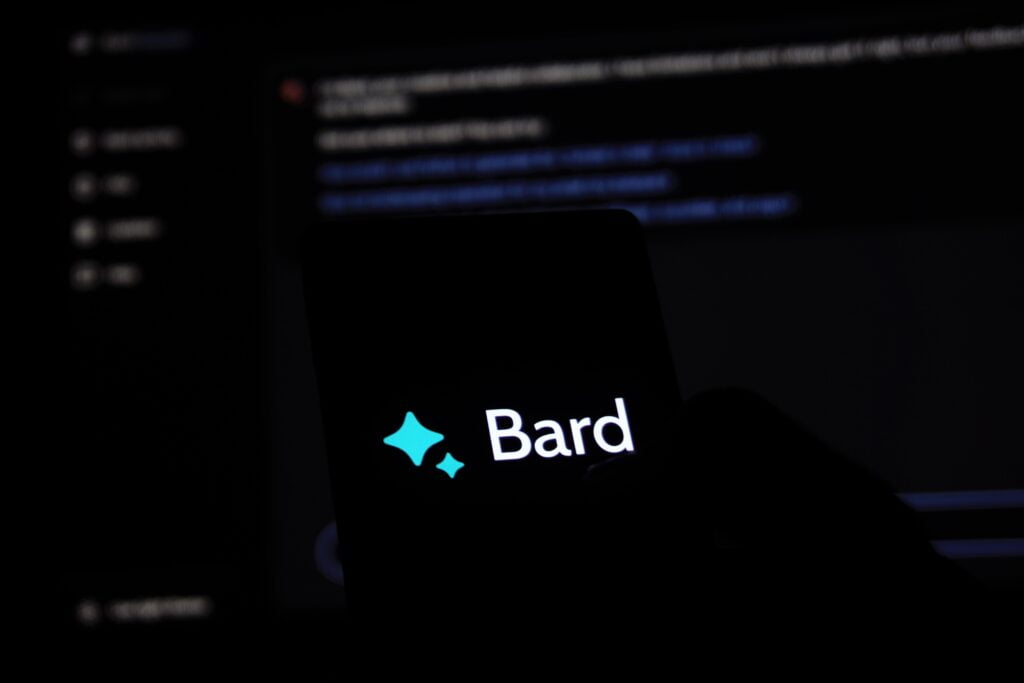Generative AI is proof of the amazing progress artificial intelligence has achieved in the ever changing field of technology. Generative Adversarial Networks (GANs), another name for generative artificial intelligence (AI), are a cutting-edge technology that has the potential to completely transform a number of sectors.

In this post, We delve into the complexities of generative artificial intelligence (AI) in this extensive book, examining its developments, applications, and transformative potential for both individuals and corporations.
Defining Generative AI
The term “generative AI” describes a subset of artificial intelligence that includes content-generating systems. These systems can generate unique outputs in the form of text, music, photos, or other types of data after being trained on preexisting data. Neural networks and deep learning are two common methods used by generative models to identify patterns in the input data and produce new, comparable instances. Examples are text-based models like GPT (Generative Pre-trained Transformer) for natural language synthesis and generative adversarial networks (GANs) for images.
Before getting deeper into Generative AI let’s check below terms.
1. What is AI?
The creation of computer systems that are capable of carrying out activities that normally require human intelligence is known as artificial intelligence, or AI. Learning, reasoning, solving problems, comprehending natural language, and perceiving are some of these tasks.
2. What are Language Models?
Language models are AI systems designed to understand and generate human-like text. To make predictions and produce intelligible words, they make use of statistical patterns and contextual data. Large-scale language models, like GPT-3 (Generative Pre-trained Transformer 3), are able to produce contextually relevant responses in a variety of tasks, like answering questions, writing essays, and having conversations, because they have been pre-trained on enormous amounts of diverse text data.
The Evolution of Generative AI
The ease of use of new user interfaces that enable the creation of excellent text, pictures, and movies in a matter of seconds has been the driving force behind the recent excitement surrounding generative AI.
It should be mentioned that the technology is not entirely new. Since its founding in 1956 at a research workshop at Dartmouth College, the academic field of artificial intelligence has seen several waves of development and hope.
The initial delay of AI research was caused by the high expenses and the inability of computers to store commands. During the 1956 Dartmouth Summer Research Project on AI, this was altered.
Artificial intelligence has been employed by researchers and artists to produce artistic works ever since it was founded in the 1950s. Harold Cohen developed AARON, a computer programme that allowed him to create paintings, and by the early 1970s, Cohen was producing and showing generative AI works.
Since their invention in the early 20th century by Russian mathematician Andrey Markov, Markov chains have been used for a long time to simulate natural languages.
Generative models and other statistical models are frequently used in machine learning to model and predict data.
Deep learning became popular in the late 2000’s and fuelled advancements in image classification, audio recognition, natural language processing, and other fields of study.
In 2014, the first practical deep neural networks that could learn generative models of complicated data, instead of discriminative ones, such as images were created. Thanks to innovations like the variational autoencoder and generative adversarial network.
In contrast to earlier Long-Short Term Memory models, the Transformer network made it possible for generative models to advance in 2017. This resulted in the release of the first generative pre-trained transformer (GPT), or GPT-1, in 2018. GPT-2, which showed the capacity to generalise unsupervised to a wide range of tasks, came next in 2019.
With the introduction of DALL-E, a transformer-based pixel generative model, in 2021, and the subsequent releases of Midjourney and Stable Diffusion, it was evident that high-quality, useful artificial intelligence art was emerging from natural language prompts.
2023 saw the release of GPT-4 in March. “It could reasonably be viewed as an early (yet still incomplete) version of an artificial general intelligence (AGI) system,” according to a Microsoft Research team. Some academics disagree, stating that as of 2023, generative AI is “still far from reaching the benchmark of ‘general human intelligence.'”
How does Generative AI works ?
Applying unsupervised or self-supervised machine learning to a set of data is how generative AI systems are built. The modality or kind of data set that is utilised determines a generative AI system’s capabilities.
The Generative Adversarial Network is one of the most well-known architectures for generative tasks (GAN). The discriminator and generator neural networks in a GAN are involved in a continuous feedback loop.
Models of Generative AI
Generative AI encompasses various models, each tailored to different types of data and tasks. Here are some prominent models within the realm of generative AI:
1.Generative Adversarial Networks (GANs):
Description: In a competitive environment, a discriminator plus a generator neural network make up a GAN. Content is created by the generator, and its generated or real status is determined by the discriminator. The generator’s capacity to generate realistic outputs is improved by this adversarial training.
Applications: Image generation, style transfer, content creation.
2. Variational Autoencoders (VAEs):
Description: Combining probabilistic and generative methods is what VAEs do. A decoder and an encoder are involved. Input data is mapped by the encoder into a latent space, which is then used by the decoder to recreate the input. VAEs are renowned for their ability to produce outputs that are both structured and diversified.
Applications: Image and sequence generation, anomaly detection.
3. Recurrent Neural Networks (RNNs):
Description: Neural networks with a specific purpose for sequential data are called RNNs. They are appropriate for tasks involving context and sequential dependencies because they contain internal memory for processing sequences.
Applications: Text generation, language modeling, music composition.
4. Long Short-Term Memory Networks (LSTMs):
Description: Long-range dependencies in sequences can be better captured by LSTMs, a particular kind of RNN. They work well on jobs where previous inputs must be remembered.
Applications: Text generation, speech recognition, time-series prediction.
5. Transformer Models:
Description: Transformers have become well-known due to their attention mechanisms and parallel processing capabilities, which were first demonstrated by models such as the GPT (Generative Pre-trained Transformer). They have established records in a variety of natural language processing tasks and are adept at managing sequential data.
Applications: Natural language generation, machine translation, text summarization.
6. Deep Belief Networks (DBNs):
Description: DBNs are probabilistic visual models made up of several layers of latent, stochastic variables. They are employed in feature representation and unsupervised learning.
Applications: Image and speech recognition, collaborative filtering.
7. PixelCNN and PixelRNN:
Description: These models create images one pixel at a time, working pixel by pixel. High-quality images can be produced by focusing on capturing the dependencies between pixel values with PixelCNN and PixelRNN.
Applications: Image generation, texture synthesis.
8. Conditional Generative Models:
Description: These models provide data in response to particular inputs or conditions. For instance, conditional GANs let users direct the output that is produced by giving more information while the network is being created.
Applications: Image-to-image translation, style transfer, conditional text generation.
These models represent a diverse set of approaches within the field of generative AI.
Ongoing research continues to refine and expand the capabilities of generative models.
What are Dall-E, ChatGPT and Bard?
Dall-E
DALL-E is a generative model developed by OpenAI. It is an extension of the GPT-3 architecture and is specifically designed for generating images from textual descriptions.
DALL·E, DALL·E 2, and DALL·E 3 are text-to-image models developed by OpenAI using deep learning methodologies to generate digital images from natural language descriptions, called “prompts”.
ChatGPT

ChatGPT is a natural language processing tool driven by AI technology that allows you to have human-like conversations and much more with the chatbot. The language model can answer questions and assist you with tasks, such as composing emails, essays, and code.
Google Bard

Google Bard is an AI-powered chatbot tool designed by Google to simulate human conversations using natural language processing and machine learning. In addition to supplementing Google search, Bard can be integrated into websites, messaging platforms or applications to provide realistic, natural language responses to user questions.
What are the benefit’s of Generative AI?
Science and technology will advance quickly in the field of generative artificial intelligence. There are several advantages of using generative AI in a variety of sectors and applications.
Here are some of the benefits of Generative AI.
- Creativity and Innovation:
Generative AI can produce novel and creative outputs, fostering innovation in fields such as art, design, and content creation.
- Automation and Efficiency:
Automated content generation reduces the need for manual creation, saving time and resources. This will increase efficiency in tasks such as content creation, data synthesis, and even code generation.
- Personalization:
Generative models can tailor outputs based on individual preferences or specific input conditions. Allowing personalized user experiences in applications like recommendation systems and adaptive interfaces.
- Data Augmentation:
Generative models can create synthetic data, enhancing datasets for training machine learning models.
- Natural Language Processing (NLP) Improvements:
Generative models excel in NLP tasks, generating coherent and contextually relevant text. Enhances chatbots, language translation, and content summarization, improving human-computer interactions.
- Cost Savings:
Automated content creation and data synthesis reduce the need for manual labor, leading to cost savings.
While the benefits are substantial, it’s important to approach the implementation of generative AI with ethical considerations, ensuring responsible use and addressing potential biases in the generated content.
Applications of Gen AI
One of the AI architecture advances that may be utilised to automate, augment, and autonomously execute business and IT processes is generative pretrained transformers, which is the model that powers ChatGPT.
Though the specifics vary depending on the use case, generative AI offers advantages such as expedited product development, greater customer experience, and increased employee productivity.
Here are some of the applications of Generative AI in real world.
- Art and Creativity:
The field of art is a natural fit for generative AI. These algorithms are used by designers and artists to generate original ideas or even to work with AI to create one-of-a-kind works. The options are endless, ranging from creating music to creating visual art.
2. Content Creation:
Natural language processing (NLP) models have advanced significantly in the field of content generation. Once believed to be restricted to human writers, chatbots, automated content creation systems, and even full articles can be generated with a level of coherence and fluency.
3. Healthcare:
In the healthcare industry, generative AI is essential since it helps create synthetic data that is used to train medical models and simulate different medical scenarios. This advances the fields of drug research, treatment planning, and diagnosis.
4. Gaming and Virtual Environments:
With procedural content generation, generative AI helps the gaming industry create expansive and dynamic virtual worlds. AI-driven characters with distinctive speech and behaviours improve the gameplay experience by instantly responding to user input.
How will generative AI impact the future?
The future of generative AI holds exciting prospects. Continued research and development may lead to even more sophisticated models capable of understanding context, emotion, and nuanced creativity. Integrating generative AI with other technologies, such as augmented reality and virtual reality, could redefine human-machine interactions and create immersive experiences.
What the impact of generative AI will be in the future is hard to say. Its impact spans a multitude of industries, pushing the boundaries of what is possible. As we navigate this frontier, ethical considerations must guide our path, ensuring that the power of generative AI is wielded responsibly for the betterment of society.
Frequently Asked Questions
Generative AI is a type of artificial intelligence technology that can produce various types of content, including text, imagery, audio and synthetic data.
More specifically, the GPT models are neural network-based language prediction models built on the Transformer architecture.
Open AI, Hugging Face, Anthropic, Inflection AI, and many more AI models are the top models available today.
Generative AI chatbots are artificial intelligence-powered chatbot systems designed to generate human-like text responses in natural language during text-based conversations with users.
